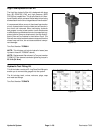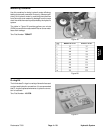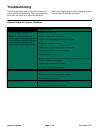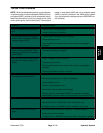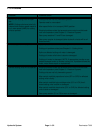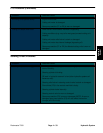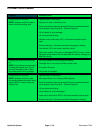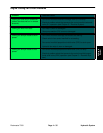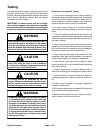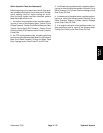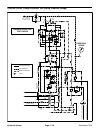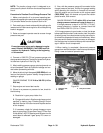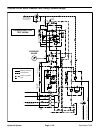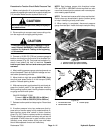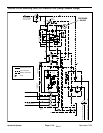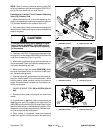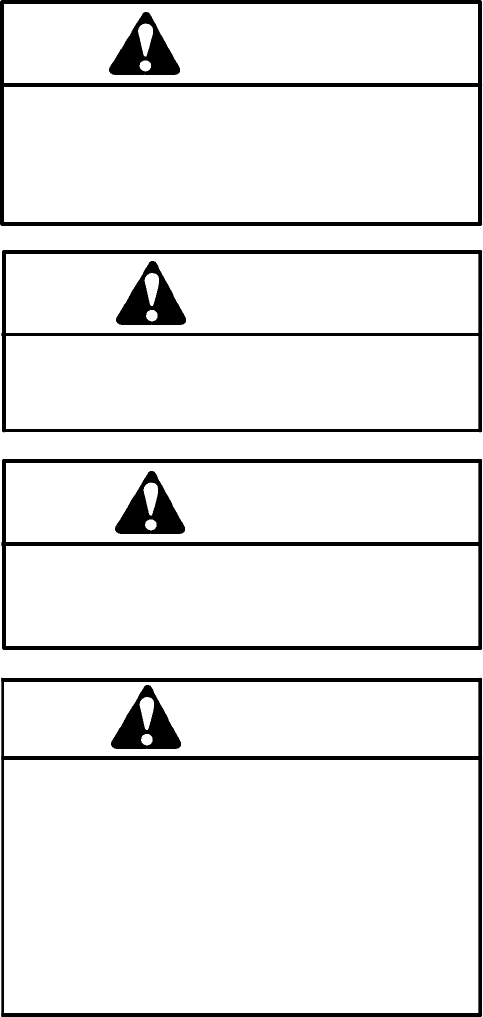
Reelmaster 7000Hydraulic System Page 4 -- 36
Testing
The most effective method for isolating problems in the
hydraulic system is by using hydraulic test equipment
such as pressure gaugesand flow meters in the circuits
during various operational checks (See the Special
Tools section in this chapter).
IMPORTANT: All obvious areas such as oil supply,
filter, binding linkages, loose fasteners or improper
adjustmentsmustbe checkedbeforeassuming that
ahydraulic componentis thesource oftheproblem.
Before disconnecting or performingany workon
the hydraulic system, all pressure in the system
must be relieved and all rotating machine parts
must be stopped. See Relieving Hydraulic Sys-
tem Pressure in the General Informationsection.
WARNING
CAUTION
Failure to use gauges with recommended pres-
sure (PSI) rating as listed in test procedures
couldresult indamage tothegauge andpossible
personal injury from leaking hot oil.
CAUTION
All t esting should be performed by two (2)
people.One personshould bein theseat tooper-
ate the machine and the other should monitor
testing equipment and record test results.
Keep body and hands away from pin hole leaks
or nozzles that eject hydraulic fluid under high
pressure. D o not use hands to search for leaks;
use paper or cardboard. Hydraulic fluid escap-
ing under pressure can have sufficient force to
penetrate the skin and cause serious injury. If
fluidis injectedintothe skin,it mustbe surgical-
ly removed within a few hours bya doctor famil-
iar with this type of injury. Gangrene may result
from such an injury.
WARNING
Precautions for Hydraulic Testing
1. Clean machine thoroughly before disconnecting or
disassembling any hydrauliccomponents. Always keep
in mind the need for cleanliness when working on hy-
draulic equipment. Hydraulic system contamination will
cause excessive wear of hydraulic components.
2. Put metal caps or plugs on all hydraulic lines left
open or exposed during testing or removal of compo-
nents.
3. Theenginemust beingoodoperating condition.Use
a phototac to determine enginespeed when performing
a hydraulic test.Engine speed will affectthe accuracy of
the tester readings.
4. When using hydraulic tester with pressure and flow
capabilities, the inlet and the outlet hoses must be prop-
erly connected and not reversed to prevent damage to
the hydraulic tester or machine components.
5. When using hydraulic tester with pressure and flow
capabilities, open load valve completely in the tester to
minimize the possibility of damaging components.
6. Install fittings finger tight and far enough to make
sure that they are not cross--threaded before tightening
them with a wrench.
7. Position tester hoses to prevent rotating machine
parts from contactingand damaging thehoses or tester.
8. Check oil level in the hydraulic reservoir. After con-
nectingtest equipment,makesure hydraulicreservoir is
full.
9. Check c ontrol linkages for improper adjustment,
binding or broken parts.
10.All hydraulic testsshould be made with thehydraulic
oil at normal operating temperature.
11.Before returning machine to use, make sure that hy-
draulic reservoir has correct fluid level.



